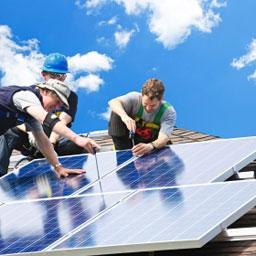A commenter on Mali: a French War for Uranium suggested that if "that zone" (presumably the Sahara in Mali and Niger) were such an El Dorado the U.S. and the Chinese would have long been interested. Actually, it turns out numerous countries are involved, especially along the Uranium Highway in the Uranium Province in Niger. Not the Americans so much, but definitely the Chinese.
![]() According to
World Information Service on Energy Uranium Project,
in
Mali, it's the Canadians (Cascade Resources Ltd.,
Northern Canadian Uranium Inc., Rockgate Capital Corp.) and
the Australians (Oklo Uranium Ltd).:
According to
World Information Service on Energy Uranium Project,
in
Mali, it's the Canadians (Cascade Resources Ltd.,
Northern Canadian Uranium Inc., Rockgate Capital Corp.) and
the Australians (Oklo Uranium Ltd).:
The following companies are performing uranium prospection and/or exploration in Mali:Cascade Resources Ltd. , Northern Canadian Uranium Inc. , Rockgate Capital Corp. , Oklo Uranium Ltd
Faléa uranium/silver project
> View deposit info
Opposition to uranium mining in Faléa: Association des ressortissants et amis de la Commune de Faléa (ARACF)Pre-Feasibility study on Faléa mine project started:
On Nov. 15, 2012, Rockgate Capital Corp. announced the commencement of a Pre-Feasibility study on its Faléa U-Ag-Cu project in south-west Mali. Rockgate has engaged the services of the DRA Group of Johannesburg, South Africa to complete the study.

Environmental and social baseline studies commissioned on Faléa mine project: On April 26, 2010, Rockgate Capital Corp. announced that it has commissioned environmental and social baseline studies on the Faléa Project, Mali.
Apparently Niger has more recoverable Uranium than either the U.S. or Canada; more than Kazakhstan; more than any country except Australia.
 In Niger, it's Russia, Korea, India, and here are a few notes
about Chinese involvement:
In Niger, it's Russia, Korea, India, and here are a few notes
about Chinese involvement:
Continue readingAreva ready to give Chinese access to Imouraren uranium mine: French nuclear giant Areva is ready to open up to a Chinese partner the


















